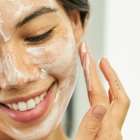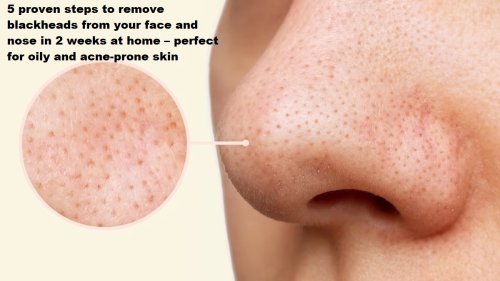The Benefits of Using Lactic Acid for Brighter, Smoother Skin in Nigeria
Lactic acid in Nigeria helps exfoliate, brighten, and smooth the skin. Discover its benefits, uses, and how to add it to your skincare routine.

The Benefits of Using Lactic Acid for Brighter, Smoother Skin in Nigeria
If you’ve been hearing people talk about lactic acid lately, there’s a good reason. This skincare ingredient is gaining attention for its gentle yet powerful exfoliating properties. It helps reveal smoother, brighter skin perfect for anyone dealing with dullness, rough texture, or hyperpigmentation.
Before diving in, let’s understand what lactic acid really is and why it might just be what your skincare routine in Nigeria needs.
What Is Lactic Acid?
Lactic acid is a type of alpha hydroxy acid (AHA) naturally derived from milk, fruits, and vegetables. It works as a mild exfoliant, removing dead skin cells and helping to renew your skin’s surface.
Unlike harsh scrubs, lactic acid works gently making it a great choice for people with dry, sensitive, or combination skin often affected by Nigeria’s hot and humid weather.
How Lactic Acid Works on the Skin
Lactic acid penetrates the top layer of the skin and breaks down the bonds between dead cells, allowing them to shed naturally. This not only promotes smoother skin but also helps boost collagen production, giving your face a youthful glow.
Also Read: 7 Best Toners for Nigerian Skin (2025): Fade Dark Spots and Glow No Matter Your Skin Type
Key Benefits of Lactic Acid for the Skin
Here are the benefits of lactic acid:
1. Gentle Exfoliation
Lactic acid helps remove dead skin cells without irritating your skin. With consistent use, you’ll notice a brighter complexion, smoother texture, and reduced dark spots all without that harsh “burning” effect some acids cause.
2. Deep Hydration
Unlike most exfoliants, lactic acid also acts as a humectant, meaning it attracts and retains moisture. This makes it perfect for dry or flaky skin, especially during Nigeria’s dry season.
3. Fights Bacteria and Breakouts
Lactic acid has mild antimicrobial properties, helping fight bacteria that cause acne. It also supports your skin barrier, reducing inflammation and breakouts.
4. Brightens Dull Skin
By removing the layer of dead cells, lactic acid helps reveal fresh, radiant skin underneath. It can also reduce the appearance of dark spots caused by sun exposure or post-acne marks.
5. Improves Skin Texture
With regular use, your skin feels smoother and more even. It’s ideal for tackling rough patches, uneven tone, or textured areas around the cheeks or forehead.
Also Read: Can I Use Salicylic Acid with Retinol? The Truth Dermatologists Want You to Know
6. Reduces Acne and Clogged Pores
Because lactic acid keeps your pores clear, it helps prevent new pimples from forming a common concern in humid Nigerian climates where excess oil builds up easily.
How to Use Lactic Acid in Your Skincare Routine
Here are the following steps to use lactic acids for effective result
Step 1: Start Slowly
If you’re new to acids, start with a low concentration (5–10%). Use it twice a week at night, then increase gradually as your skin adjusts.
Step 2: Pick the Right Product
Lactic acid comes in different forms cleansers, toners, serums, or masks. Pick one that suits your skin and fits into your routine.
For example, a gentle lactic acid toner or serum is great for beginners.
Step 3: Cleanse Gently
If you prefer cleansers, go for something mild. For instance, use a hydrating gel cleanser that contains lactic acid along with ingredients like glycerin or hyaluronic acid for added moisture.
Step 4: Moisturize After Use
Follow up with a soothing moisturizer to lock in hydration and reduce any irritation.
Step 5: Always Use Sunscreen
Because lactic acid exfoliates the top skin layer, your skin becomes more sensitive to the sun. Always use broad-spectrum SPF 30+, even on cloudy days in Nigeria.
Also Check: 8 Best Toners for Oily Skin in Nigeria: Top Picks and How to Use Them Right
How Lactic Acid Helps Brighten Skin
Lactic acid helps fade dark spots and hyperpigmentation by regulating melanin production and encouraging new cell turnover. Over time, it reveals a more even, glowing complexion.
It also keeps your skin hydrated, soft, and plump giving that natural glow Nigerians love to show off!
Conclusion
Adding lactic acid to your skincare routine can be a game-changer. It gently exfoliates, brightens, and hydrates leaving your skin smooth, soft, and healthy-looking.
It’s suitable for most skin types, especially if you want brighter skin without harsh reactions. Just remember to start slow and never skip your sunscreen.
Frequently Asked Questions
1. Can I use lactic acid every day?
Start 2–3 times a week. Once your skin adjusts, you can increase usage, but monitor your skin closely.
2. Will lactic acid make my skin peel?
It may cause mild flaking at first — that’s normal exfoliation.
3. Can sensitive skin use lactic acid?
Yes! Lactic acid is one of the gentlest AHAs and works well for sensitive skin.
4. Can I combine lactic acid with other skincare products?
Avoid using it with strong actives like retinol or vitamin C at the same time.
5. How long before I see results?
You can start seeing smoother, brighter skin in about 2–4 weeks with consistent use.
Share
What's Your Reaction?
 Like
0
Like
0
 Dislike
0
Dislike
0
 Love
0
Love
0
 Funny
0
Funny
0
 Angry
0
Angry
0
 Sad
0
Sad
0
 Wow
0
Wow
0
















